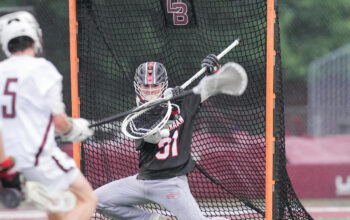Alessandra Gass, Editor-in-Chief
@agasscourant
In a world rapidly digitalizing, the concept of media literacy has become larger than the verification of sources after a google search. Rather, it has evolved into a complex web of skills needed to navigate an online space where artificial intelligence generates convincing content, ‘deepfakes’ blur the line between real and manufactured, and algorithms shape what millions see in their daily feeds. With the vast majority of students and young adults today having unrestricted to such an atmosphere, many schools have begun asking the question: should social media literacy be taught in classrooms?
Students that have grown up alongside technology feel a sense of comfortability with a variety of platforms, leading many to consume inaccurate information without a second thought. “Social media illiteracy has caused my peers to believe misinformation or form opinions without questioning the source,” said senior Sebastian Saridakis. “Many do not fact-check or recognize a potential bias when reading stories on current events or breaking news, so their views on politics, celebrities and our world as a whole can be heavily shaped by misleading posts.”
In addition, social media has become the main point of contact for a variety of publications or corporations to reach their viewers, creating a false sense of trust regarding consumption of online content. “Many colleges have turned to social media as a means of releasing important information about decision release and financial aid updates, and typically post online before sending an email update,” said College and Career Center Coordinator Susan Carroll. “If students are used to being fed certain kinds of accurate information – like a decision update – online, they begin to identify everything online as automatically accurate, which is certainly not the case.”
A more recent – but just as pressing – threat posed by online media consumption is the advent of artificial intelligence utilized unethically to falsify information in an attempt to persuade viewers. Director of Digital Learning Matt Salvestrini says, “With AI technology advancing so rapidly, we’re seeing everything from falsified videos to doctored photos that look completely real – AI can alter faces, create false scenarios, even generate fake news articles that are incredibly hard to distinguish from authentic content.”
How can high schoolers begin to break this cycle? A key component of being literate in today’s digital world is the ability to engage with news as a weary critical thinker as opposed to an automatic consumer of information. “One of our core focuses is to help teach students to be critical thinkers, as the idea of media literacy is really to help students access, analyze and make good sense of information,” says Mr. Salvestrini. “These skills allow students to make informed decisions based on that information and then ultimately be able to turn around and create their own media in a way which is responsible and thoughtful.”
Students are introduced to source verification strategies during research projects throughout their education at NCHS. “The principles that you’ve been learning all the way back to elementary schools about how to engage in inquiry are built early and meant to be applied as students rise through the school,” said Mr. Salvestrini. “Whether that’s gathering information from print text or from digital resources, we really work to create a foundation based on critical thinking and build the habit of verification.”
Some feel that skills introduced in classrooms would be better retained if a stronger emphasis was placed on media literacy tactics throughout the school. “A new segment added to the broadcast that focuses on media literacy could teach students how to identify reliable sources, spot misinformation, and understand biases in the news,” said senior Sebastian Saridakis. “The segment could use real examples from platforms like X or trending stories to show how information spreads and how to analyze it critically. This would give students practical tools to navigate the information they see every day.”
However, librarians and teachers at the high school are aware of the threat posed by online media consumption, and have been working to ensure that each graduating class has the ability to not only consume media responsibly but also create it ethically. “We continuously urge students to ask themselves: are there assumptions that I’m making? Are there assumptions that the generators of those content are making? How can I really think deeply and critically about what’s being presented to me to make sense of it?” said Mr. Salvestrini. “Students from this are not just going to be consuming information, but they’re going to be creating information that’s going to be put out into society. Our goal is to create both critical consumers and also responsible producers of that information.”




